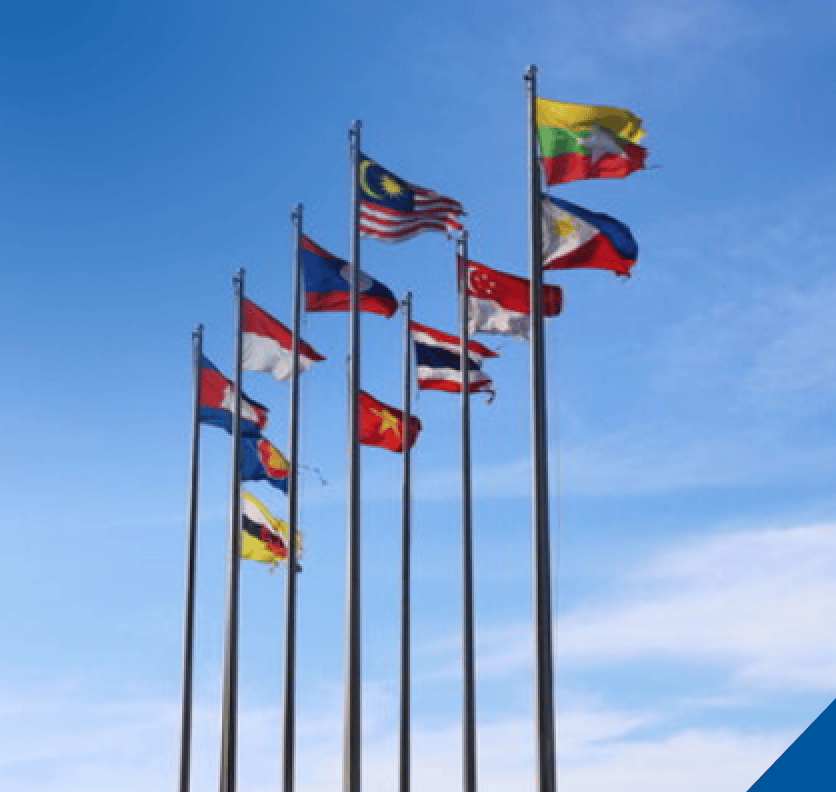[vc_row css=”.vc_custom_1565542682041{margin-right: 0px !important;margin-left: 0px !important;}”][vc_column css=”.vc_custom_1565542696462{padding-right: 0px !important;padding-left: 0px !important;}”][vc_single_image image=”8783″ img_size=”full” el_class=”banner-event”][/vc_column][/vc_row][vc_row css=”.vc_custom_1565542751414{margin-right: 0px !important;margin-left: 0px !important;}”][vc_column width=”1/4″][/vc_column][vc_column width=”1/2″ css=”.vc_custom_1565622195563{padding-bottom: 50px !important;}”][vc_column_text el_class=”title-event”][post_title][/vc_column_text][vc_column_text el_class=”date-venue-news”]Jakarta, 8 December 2020[/vc_column_text][vc_column_text el_class=”text-par-news”]In the last virtual Focus Group Discussion (FGD) of 2020, ACCEPT invited experts and policymakers to discuss energy in Nationally Determined Contribution (NDC). The topic highlighted the role of low-carbon energy transition and energy efficiency measures in NDC.
The FGD was started with the welcoming remarks from Dr. Nuki Agya Utama, Executive Director of ACE; H.E. Morten Høglund, Ambassador of Norway to ASEAN; and Mr. Ken O’Flaherty, Regional Ambassador to Asia Pacific and South Asia, UK COP26 Presidency. They believe that realising climate actions ahead will be very challenging, yet acknowledging the positive changes in the market such as the declining prices of renewable combine with international cooperation to move faster towards the target. They also agree that this kind of dialogue is needed to guide and encourage ASEAN Member States (AMS) in successfully achieving the international targets.
The first sharing session was given by Dr. Isabelle de Lovinfosse, the Head of Southeast Asia COP26 Strategy, British High Commission Singapore. She reminded us to prepare a future with solid foundations, including a greener, more resilient, and inclusive economy, while recovering from the Covid-19 pandemic. The UK is currently leading by example with ambitious NDC, Long-Term Strategies (LTS), and legislations. The UK is raising its ambition even further ahead of the 5th anniversary of the Paris Agreement with the goal of 68 per cent emissions cut by 2030 and publishing “The Ten Point Plan for a Green Industrial Revolution” policy paper. The UK has also proved that reducing emissions and improving the economy can go hand in hand. This certainly encourages us to keep moving with the targets that have been made to realize a low carbon society.
There are four key pillars of the energy transition that countries should focus to accelerate in achieving the climate targets. They include coal power phase-out, reduction of international coal financing, more attractive clean energy offers, and a new financial framework. Although ASEAN has set a target of renewable use of up to 50 per cent in energy consumption, the utilisation of coal power is still dominant and increasing. Therefore, it is necessary to make additional efforts to move the industrial players from coal-based energy to renewable energy. Dr. Isabelle also said that ASEAN had high potential with many natural resources such as sun, wind, water, and biomass.
The second sharing session was given by Ms. Melissa Low, a Research Fellow in Energy Studies Institute (ESI), National University of Singapore (NUS). She presented findings from a review article entitled “The Nationally Determined Contributions of the Southeast Asian countries under the Paris Agreement: Challenges and opportunities in the energy sector”. The article was jointly produced by researchers at the ESI-NUS, Norwegian Institute of International Affairs (NUPI), and the ASEAN Centre for Energy (ACE). She explained that the researchers reviewed and compared the NDCs of AMS under the Paris Agreement from an energy-sector perspective. On average, the energy sector contributes more than 57 per cent of the combined emissions of the AMS.
The starting point of the study was the numerous studies assessing countries’ NDCs and their progress in implementing them. The review shows that while the national circumstances of countries are important, they are not taken into account when studying the NDCs. This is important since the national circumstances of the AMS range widely. They vary also in terms of energy resources: some AMS are small net energy importing (Singapore) or exporting (Brunei) countries, while others have a range of energy resources including both fossil fuel and renewable resources (Lao PDR, Malaysia, Myanmar, Indonesia, Thailand, and Vietnam).
She noted that several AMS’ Biennial Update Reports (BURs) and anecdotal evidence describe the institutional challenges to addressing climate change, including that the one significant barrier includes climate change cutting across the responsibilities of several ministries and associated agencies, and the final implementation decision being under the purview of the government’s cabinet. However, she highlighted that AMS have already started to prioritize renewable resource deployment despite political challenges, state capacity, and structure of the energy sector.
Ms. Melissa concluded that despite the recognition that the energy sector is the main source of emissions of most ASEAN member states, these countries are finding it challenging to transition away from fossil fuels. Although ASEAN member states are giving more attention to renewable energy, she explained that climate action in the region is undermined by fossil fuel growth, especially coal. An enabling environment, strong government policy, and support are needed to speed up the low-carbon transition. AMS should also undertake fossil fuel subsidy reform and carbon pricing. Their recommendations are that AMS Governments can help create a more enabling environment to facilitate renewable energy deployment in the short term and to find greater cooperation across the region in the long-run to leverage the comparative advantage of each country to meet its NDCs while addressing developmental priorities.
After the second speaker, Dr. Zulfikar Yurnaidi from ACE, as the moderator of the event, invited the two speakers in the question-and-answer (Q&A) session. Both speakers agreed that ASEAN had enormous potential to achieve the targets that have been set toward the full implementation of the Paris Agreement.

Next, we have three speakers from AMS that explained the role of energy in their own country. The first speaker was Mr. Cheah Sin Liang, Deputy Director of International Policy, National Climate Change Secretariat (NCCS) Singapore, with the title of his presentation “Singapore’s Experience on Preparing its NDC Enhancement and LEDS”. To set the context of Singapore’s climate efforts, Mr. Cheah highlighted his country’s national circumstances. Singapore has a high population density, is low-lying and highly urbanised. However, its climate conditions do not allow for large scale deployment of hydro, wind, and geothermal power generation. Solar energy is Singapore’s main renewable energy option, but its deployment at scale is limited due to intermittency and land availability. Given these constraints, Singapore had nonetheless increased its use of natural gas, the cleanest fossil fuel, which currently accounts for 95 per cent of its electricity generation, while it continued to push ahead on solar deployment.
The country is hence pushing ahead to overcome its twin challenges of mitigating its emissions and building up climate resilience while minimising economic cost and social disruption. Another challenge Singapore faces is that electricity demand is expected to increase to support new data centres, agri/aqua-tech food production facilities and efforts to phase out internal combustion engine vehicles and have vehicles running on cleaner energy by 2040. In March 2020, Singapore submitted its enhanced 2030 NDC and 2050 Low-Emission Development Strategies (LEDS), which were both prepared under a holistic process, to the United Nations Framework Convention on Climate Change (UNFCCC) in support of the Paris Agreement.
The speaker also explained that Singapore’s strategy to realise its LEDS aspiration was built on three thrusts: i) to transform its industry, economy, and society towards a low carbon future, e.g. by switching to more renewable energy, achieving greater energy efficiency and reducing energy demand; ii) to adopt advanced low-carbon technologies as they mature (e.g. carbon capture, utilisation and storage (CCUS) and low-carbon sourced hydrogen); and iii) to pursue effective international cooperation (e.g. well-functioning carbon markets, opportunities for cross-border carbon storage and clean energy imports via regional power grids and other innovative platforms). Singapore’s implementation of its carbon tax, which was applied uniformly to all sectors without exemption, would catalyse the industry to adopt energy efficiency and conservation measures to reduce their emissions.
The speaker concluded that LEDS development would facilitate efforts to galvanise whole-of-government / nation efforts towards a common aspiration of a low-carbon & climate-resilient future, even amid new challenges like Covid-19. It is also said that the LEDS would evolve to take into account experience from implementation efforts, technology developments, and opportunities from international cooperation. Finally, the speaker emphasized the importance of robust institutional arrangements, technical work and stakeholder consultations to support LEDS preparations.
Next, we have Mr. Hoang Van Tam, Deputy Head of Climate Change and Green Growth Office, Ministry of Industry and Trade (MOIT) Vietnam, with his presentation “Getting Vietnam on a Low Carbon Energy Path to Achieve NDC Target”. Starting with the definition of NDC scenarios, the speaker explained about Vietnam’s previous NDC to reduce greenhouse gas (GHG) emissions by 8 per cent compared to business-as-usual (BAU). He then presented the results of several scenarios used, such as reducing emissions, the portion of renewable energy (RE) used in the electricity system, and reducing the use of coal. The use of coal and gas will decrease, which can be seen from the declining imports of coal and gas due to the increasing use of RE.
All scenarios result in a significant transformation of final energy use from coal and oil products to natural gas, especially in the industrial sector. The direct use of natural gas increases by up to 93 per cent. Some conclusions that can be drawn are Vietnam is on the right track towards the unconditional NDC target of 9 per cent reduction below BAU by 2030, and 27 per cent reduction if it has international support. Then, the electricity sector contributes to reducing emissions by 64 per cent, followed by the industrial sector by 26 per cent and transportation by 7 per cent. A competitive auction scheme is recommended to replace Feed-in-Tariff (FiT) as a more effective low-cost policy in promoting RE growth. The industrial energy efficiency (EE) benchmark is an effective tool for improving EE in the industrial sector. Meanwhile, EE for residential and commercial can prioritise tightening the EE standards in air conditioning systems.
And the last speaker of the FGD was Ms. Katunchalee Thammakul, Director of Policy and Strategy Section, Office of Natural Resources and Environmental Policy and Planning (ONEP) Thailand, with the topic “Thailand’s Experience on Updating NDC”. In this session, the speaker highlighted that Thailand was being ranked eighth most “extreme risk” category affected by the adverse impacts of climate change according to German Watch’s Climate Risk Index 2020. She also stated that GHG emission is greatly influenced by the energy sector of almost 70 per cent regarding Thailand’s national circumstances and Third BUR. She explained the steps taken by the Royal Thai government to prioritize climate change as a national agenda and policies from 1994 to the present, in order to against climate change impacts and enhance climate actions in the country.
Climate change issue has been mainstreamed into the 20-year National Strategy (2018-2037) to ensure the long-term continuity of climate actions alongside economic and social consideration, and it has been incorporated in other climate policies and plans to implement at all levels. Thailand’s updated NDC was submitted to the UNFCCC on October 26, 2020 which went through national institutional structures and processes including strong cooperation from relevant stakeholders. Thailand’s updated NDC refers to relevant decisions and includes the components of mitigation, adaptation, and support needs. In the end, the NDC Roadmap on Mitigation 2021-2030 is displayed, from which it can be seen the plans that Thailand will undertake in mitigating various sectors to ensure its commitment following the NDC’s target at 20 per cent of GHG emission reduction from BAU level by 2030.
Then, the moderator invited back the three speakers for a Q&A session. It was interesting listening to the opinions of each country regarding updates from other countries. It became a session that supports and strengthens each other.
Finally, the ACCEPT Project Manager, Mr. Beni Suryadi gave the closing remarks. He thought that this discussion had been very insightful, and believed that ASEAN and the world were moving in the right direction. On this occasion, Mr. Beni also showed the participants about the Briefing Note from the first and second FGDs.[/vc_column_text][vc_column_text el_class=”photo-caption-news”](R)[/vc_column_text][vc_tweetmeme share_via=”ASEAN_EnergyCC”][/vc_column][vc_column width=”1/4″][/vc_column][/vc_row]











